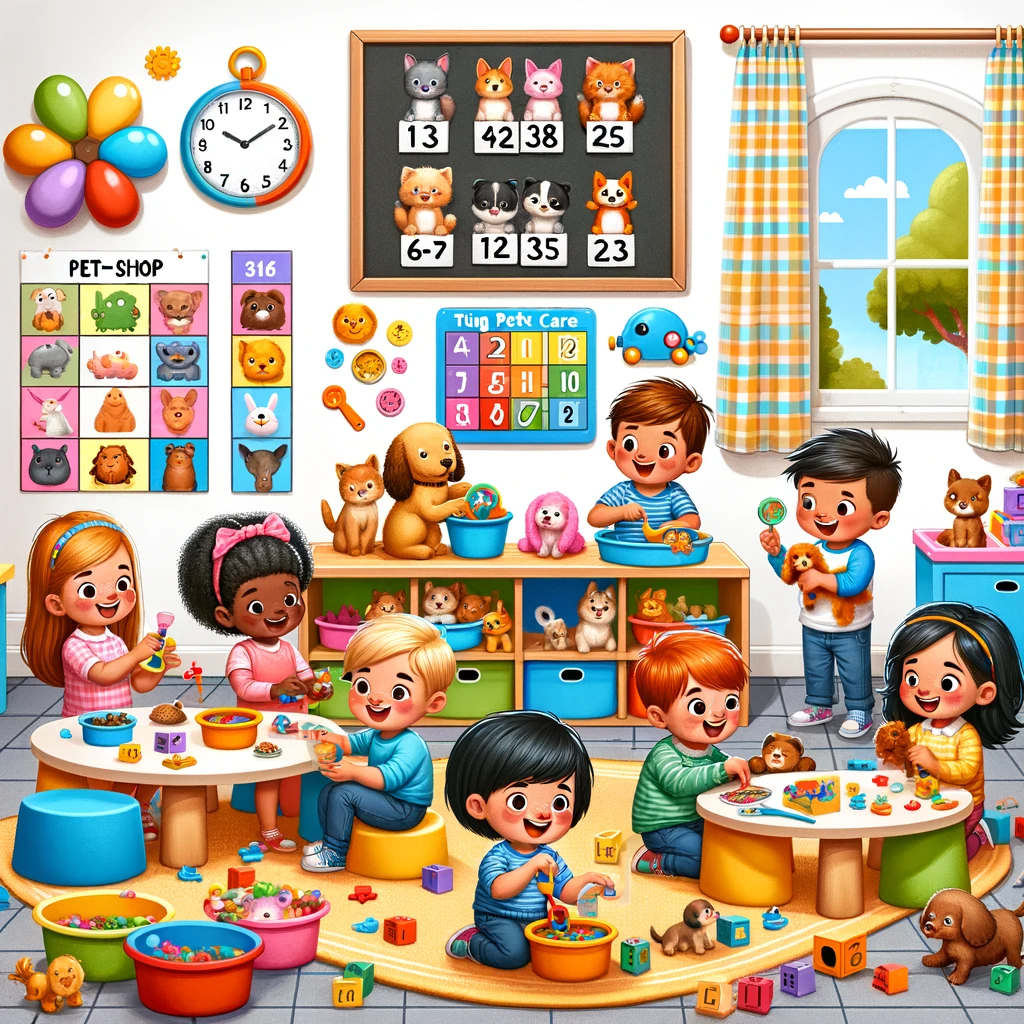Introduction
Hey there, fellow parents and educators! Are you on the prowl for some fresh, fun ways to introduce math to your preschoolers? Look no further! Our Pet Math Activities for Preschoolers are here to save the day. We all know that little ones can be a tough crowd to please, but who can resist the charm of adorable pets? Combining our furry friends with engaging math activities is like hitting two birds with one stone – or should we say, teaching two concepts with one paw?
Why Pet Math Activities?
Let’s face it, math can sometimes be a bit of a snooze-fest for preschoolers. But throw in some playful puppies or curious kittens, and suddenly it’s a whole new ball game. Pets naturally capture children’s interest, making them the perfect theme for introducing basic math concepts in a way that’s both enjoyable and educational.
The Tail-Wagging Benefits
- Boosts Engagement: Pets are a universal love language for kids. They’re more likely to engage with and enjoy the learning process.
- Encourages Learning Through Play: These activities are designed to be hands-on and interactive, making learning feel like play.
- Builds Fundamental Math Skills: From counting to basic addition, these activities lay the groundwork for future math success.
Counting with Canines: A Numbers Game
Who knew that counting could be so much fun? With our ‘Counting with Canines’ activity, preschoolers can practice their numbers by counting furry friends.
Materials Needed:
- Toy dogs (or pictures of dogs)
- Number cards
How to Play:
- Lay out the toy dogs in a line.
- Ask your child to count the dogs and match them with the correct number card.
- For an extra challenge, mix up the dogs and have them recount.
Measuring Mania: How Tall is Your Pet?
Now, let’s take a walk on the wild side with some measuring fun. This activity helps kids understand the concept of length and height using their favorite pets as a reference.
Materials Needed:
- Ruler or measuring tape
- Pictures of various pets
Steps to Follow:
- Show your child a picture of a pet.
- Ask them to guess how tall the pet is.
- Measure it together and compare their guess with the actual height.
Sponge Painting: A Purr-fect Way to Learn Shapes
Ah, sponge painting – it’s messy, it’s fun, and it’s a fantastic way to learn shapes! This activity combines art and math for a creative learning experience.
Materials Needed:
- Sponges (cut into different shapes)
- Paint
- Paper
Let’s Get Painting:
- Dip the shaped sponges into paint.
- Press them onto paper to create pet-themed art.
- Discuss the shapes used in their masterpiece.
Sorting and Classifying: A Furry Fun Activity
Sorting and classifying are essential skills in math, and what better way to learn them than through pets?
Materials Needed:
- Toy pets or pet pictures
- Sorting trays or mats
Sorting Steps:
- Group the pets by type, color, or size.
- Encourage your child to explain their sorting criteria.
- Shuffle and sort again for endless fun!
FAQs
Q: Are these activities suitable for all preschoolers? A: Absolutely! These activities are designed to be adaptable for different ages and learning stages.
Q: Can I use real pets for these activities? A: While real pets can add extra excitement, it’s often more practical and safer to use toy pets or pictures.
Q: How can I incorporate these activities into a daily routine? A: Try dedicating a ‘Pet Math Hour’ each week or incorporate these activities into playtime.
Q: Do these activities require a lot of preparation? A: Not at all! Most materials are simple and can be found around the house or at a local store.
Q: Can these activities help with other skills besides math? A: Yes, they also promote fine motor skills, problem-solving, and creative thinking.


Add Comment